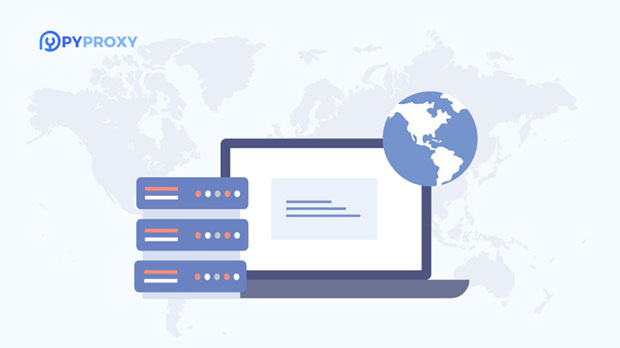In today’s world of increasing digital privacy concerns and geographic content restrictions, a smart proxy solution is crucial for optimizing the VPN and anonymous browsing experience. By providing an added layer of security and flexibility, smart proxies can significantly enhance the ability to browse the internet privately, securely, and without geographical restrictions. These proxies not only provide anonymity but also improve the overall browsing experience, offering fast speeds and seamless connections across the globe. This article delves into how smart proxies can revolutionize VPN and anonymous browsing for users worldwide, focusing on key aspects like performance, security, and accessibility. Understanding Smart Proxies and Their Role in VPN and Anonymous BrowsingTo grasp how smart proxies optimize VPN and anonymous browsing experiences, it's essential to first understand what they are and how they function. A smart proxy is a type of server that acts as an intermediary between a user and the internet, facilitating a secure and anonymous connection. It hides the user's IP address, thereby masking their online identity and providing privacy. In the context of VPN services and anonymous browsing, smart proxies enhance the user's experience by offering improved speed, reliability, and more robust security.Smart proxies are particularly useful for circumventing geographical restrictions, which is one of the core benefits for users who need access to content unavailable in their region. By acting as a bridge to various locations, these proxies allow users to appear as if they are browsing from a different country, unlocking content from global sources. Performance Improvement: Speed and ReliabilityOne of the key challenges with traditional VPNs and anonymous browsing is maintaining fast and reliable connections. While VPNs offer privacy and security, they often come with reduced speeds, which can negatively impact the browsing experience, especially when streaming content or engaging in activities that require a lot of bandwidth.Smart proxies can significantly improve this performance. By using a smart proxy, users can access faster, more stable connections. Unlike conventional proxies that often route traffic through a single server, smart proxies distribute data across multiple servers located in different regions. This distribution minimizes bottlenecks and ensures that the user's connection remains fast, even when accessing geographically distant content.Furthermore, smart proxies often have optimized routes that direct traffic more efficiently, reducing latency and providing a smoother browsing experience. This becomes particularly important for users who need high-speed internet for activities such as video streaming, online gaming, or large file downloads.Enhanced Security Features for Anonymous BrowsingWhen it comes to maintaining privacy and anonymity online, smart proxies play a crucial role. Many individuals turn to VPNs and proxies to keep their browsing activities hidden from third parties, including hackers, advertisers, and government entities. Smart proxies offer advanced encryption protocols that further bolster security, ensuring that any data sent over the internet is securely encrypted and protected from prying eyes.Additionally, smart proxies often come equipped with features such as IP rotation and anti-fingerprinting mechanisms. IP rotation ensures that users are assigned new IP addresses at regular intervals, making it even more difficult to track or identify them. Anti-fingerprinting technology works to mask the user's device information, making it harder for websites and tracking systems to identify unique characteristics of the device they are using.These advanced security measures are crucial for individuals who want to ensure their online activities remain completely private, especially in situations where sensitive data might be exchanged or when browsing in countries with heavy surveillance.Bypass Geographic Restrictions with Smart ProxiesIn many cases, users face the frustration of being unable to access certain websites or streaming services because of geographical restrictions. Content providers often restrict access based on a user’s IP address, limiting availability to certain regions. This is where smart proxies can be incredibly beneficial.Smart proxies allow users to bypass these geographical blocks by masking their real IP address and instead routing their traffic through servers located in different regions. This means that users can access websites, streaming platforms, or other online content as if they are in a different country, regardless of their actual physical location. Whether it’s accessing streaming services, news websites, or social media platforms, smart proxies ensure that users can enjoy unrestricted access to content across the globe.For businesses, smart proxies provide the ability to carry out market research or access global data without being hindered by geo-blocking. By using smart proxies, companies can gather insights from various regions, which is especially important in a globalized economy.Optimizing Privacy for Public NetworksUsing a public network, such as those found in coffee shops, airports, or hotels, poses a significant privacy risk. These networks are often unsecured, making them vulnerable to hacking attempts and data theft. When connecting to a public Wi-Fi network, a user's data could potentially be intercepted by malicious actors.Smart proxies add an extra layer of protection when browsing on public networks. They secure the user’s connection by routing their traffic through a secure proxy server, ensuring that sensitive data such as passwords, credit card information, and browsing history are protected from unauthorized access. This is particularly important for individuals who need to maintain confidentiality while using public Wi-Fi for business or personal reasons.In combination with a VPN, smart proxies further enhance security by creating a multi-layered defense against potential threats, allowing users to browse safely even in high-risk environments.Improving Global Accessibility and Business EfficiencyFor businesses that operate on a global scale, access to international data and seamless communication across borders is vital. Smart proxies help improve global accessibility by enabling secure and fast connections to various regions. This is particularly useful for businesses that need to monitor global trends, conduct market research, or even connect with customers and partners in different locations.Smart proxies also enable businesses to protect their internal resources by ensuring that all sensitive data transmitted over the internet is encrypted. This can be crucial for businesses that deal with confidential client information or proprietary business data. By offering increased security and flexibility, smart proxies allow businesses to operate more efficiently and securely, even in a globalized digital landscape.Conclusion: Smart Proxies as an Essential Tool for VPN and Anonymous BrowsingSmart proxies are indispensable for optimizing the VPN and anonymous browsing experience. They provide enhanced security, faster performance, and the ability to bypass geographical restrictions, ensuring that users can browse the internet securely and without limitations. Whether you are an individual concerned with privacy or a business seeking to access global data and protect sensitive information, smart proxies offer a comprehensive solution to your online needs. By integrating smart proxies with VPN services, users can enjoy an optimized browsing experience that combines privacy, speed, and accessibility on a global scale.
Apr 03, 2025
![arrow]()




























































